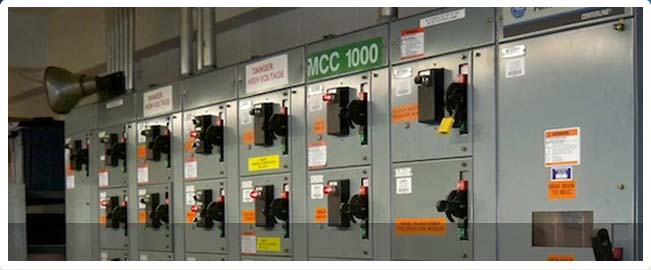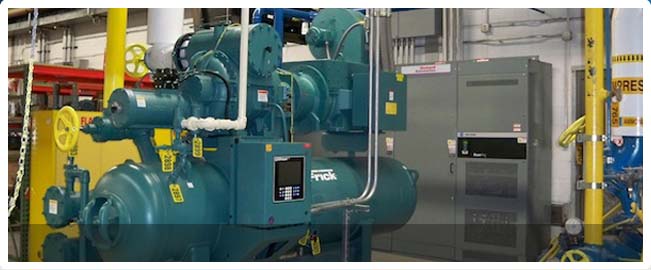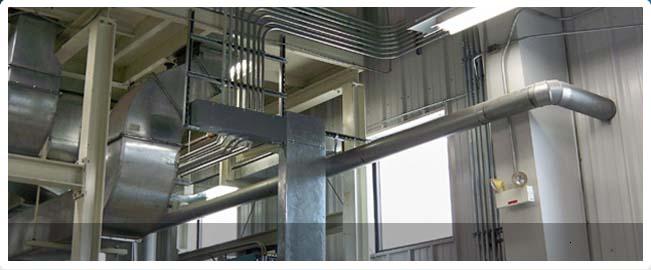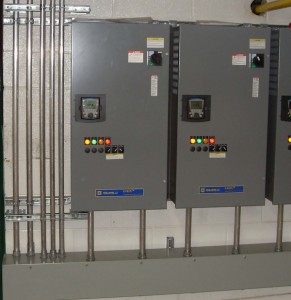VARIABLE SPEED (FREQUENCY) DRIVES
Variable Frequency Drives
A variable-frequency drive (VFD) is a system for controlling the rotational speed of an alternating current alternating (AC) electric motor by controlling the frequency of the electrical power supplied to the motor.
A variable frequency drive is a specific type of adjustable-speed-drive. Variable-frequency drives are also known as adjustable-frequency drives (AFD), variable-speed drives (VSD), AC drives, microdrives or inverter drives. Since the voltage is varied along with frequency, these are sometimes also called VVVF (variable voltage variable frequency) drives
When a VFD starts a motor, it initially applies a low frequency and voltage to the motor. The starting frequency is typically 2 Hz or less. Thus starting at such a low frequency avoids the high inrush current that occurs when a motor is started by simply applying the utility (mains) voltage by turning on a switch. After the start of the VFD, the applied frequency and voltage are increased at a controlled rate or ramped up to accelerate the load without drawing excessive current.
This starting method typically allows a motor to develop 150% of its rated torque while the VFD is drawing less than 50% of its rated current from the mains in the low speed range. A VFD can be adjusted to produce a steady 150% starting torque from standstill right up to full speed.
Articles on Drives
Drives Magazine - Evolution of Drives
Drives Mag: The use of power semiconductors to vary frequency to control the shaft speed of an electric motor is now five decades old. Drives are capturing a larger role in linking electricity to work and information networks.




